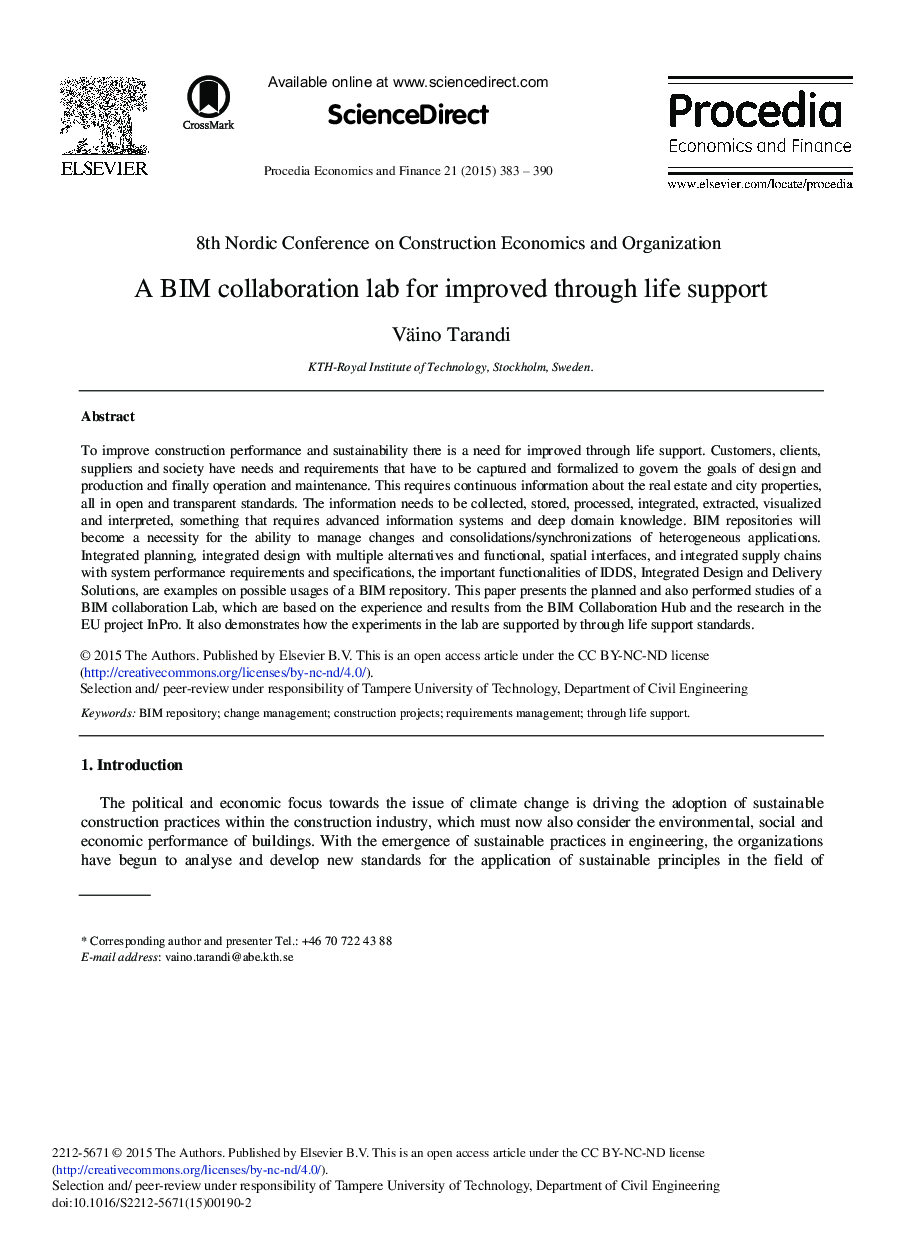| Article ID | Journal | Published Year | Pages | File Type |
|---|---|---|---|---|
| 980087 | Procedia Economics and Finance | 2015 | 8 Pages |
To improve construction performance and sustainability there is a need for improved through life support. Customers, clients, suppliers and society have needs and requirements that have to be captured and formalized to govern the goals of design and production and finally operation and maintenance. This requires continuous information about the real estate and city properties, all in open and transparent standards. The information needs to be collected, stored, processed, integrated, extracted, visualized and interpreted, something that requires advanced information systems and deep domain knowledge.BIM repositories will become a necessity for the ability to manage changes and consolidations/synchronizations of heterogeneous applications. Integrated planning, integrated design with multiple alternatives and functional, spatial interfaces, and integrated supply chains with system performance requirements and specifications,the important functionalities of IDDS, Integrated Design and Delivery Solutions, are examples on possible usages of a BIM repository. This paper presents the planned and also performed studies of a BIM collaboration Lab, which are based on the experience and results from the BIM Collaboration Hub and the research in the EU project InPro. It also demonstrates how the experiments in the lab are supported by through life support standards.
